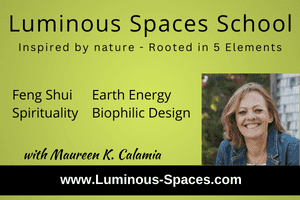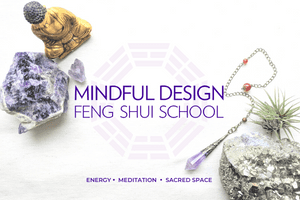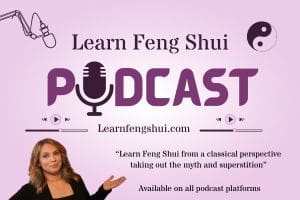The Five Elements
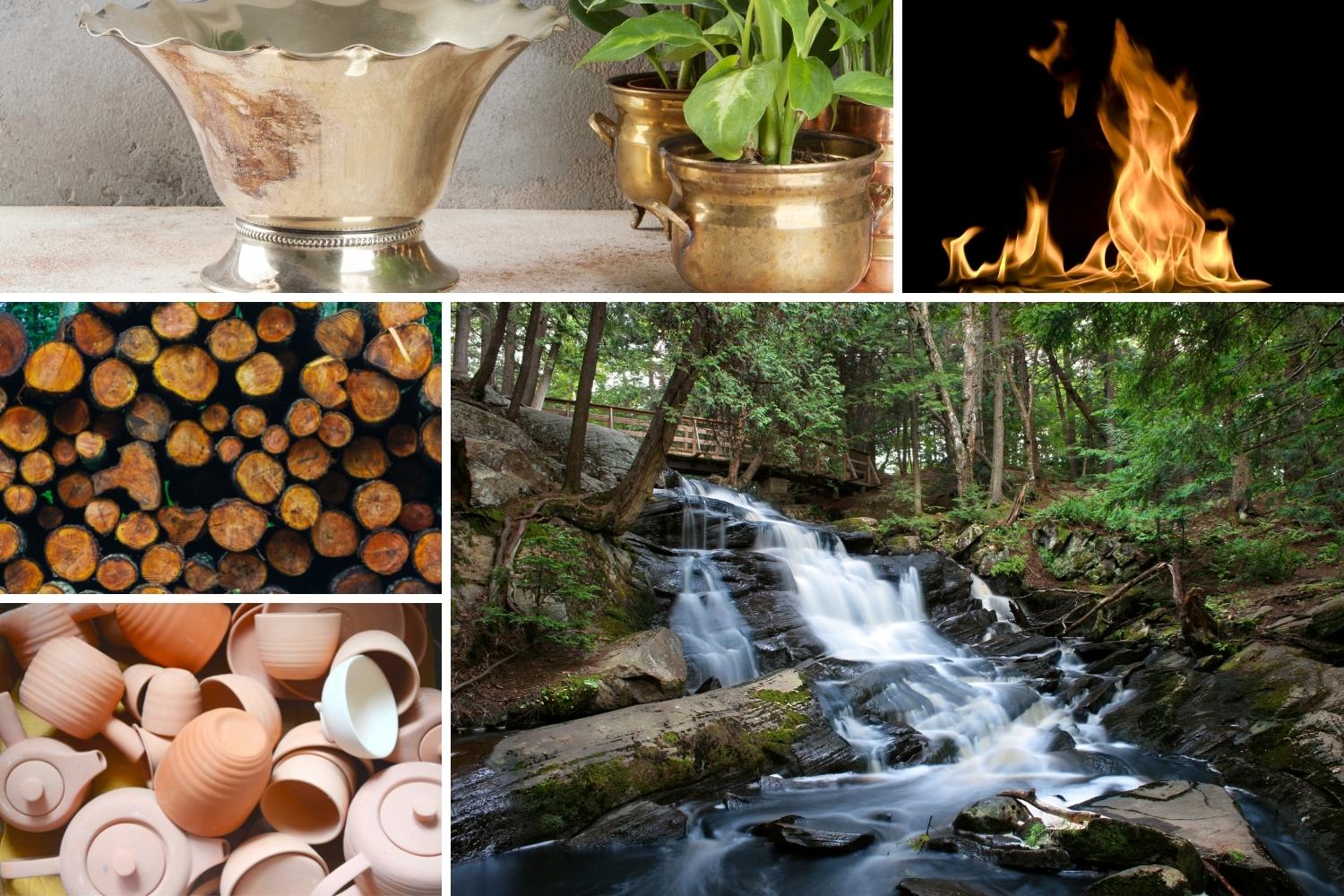
The five elements in Feng Shui are an important piece of the application of Feng Shui principles in that they deal with the elemental balance of those items and energies in your space. All five elements are found in the natural world and comprise the basic energies needed in every space.
The five elements are: Wood, Fire, Earth, Metal, and Water. Each element will have characteristics and representations based on their essence and can be used in a space in a variety of ways. Through shape, color, literal object, and art object depicting the element. There is no one way or right way when applying the five elements; one of the gifts of Feng Shui. When working with the five elements, we often look to balancing the components and the energy while making the space personal and uniquely yours.
“The five elements are energies, not things. In Hinduism, they are known as the five tattvas. Psychic people can see them and their geometric forms.”
Based on the IFSG Feng Shui Glossary, the elements are defined as follows:
 Wood
Wood
“One of the Five Elements represented by the color green. Its movement is upward, expansive and symbolizes growth. It represents the connection between Heaven and Earth, the East sector of the Bagua with the number 3 and Southeast with number 4, columnar shapes, Spring season, and the liver.”
Representations may include:
colors of blues and greens
stripes or column shapes
art depicting trees and plants, florals or forest vistas
plants, trees, flowers, or other vegetation, real or silk
items made of wood
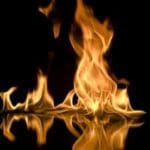 Fire
Fire
“One of the Five Elements represented by the color red. Its movement is upward, outward, expansive and explosive. Fire energy is very active and vibrant. It represents the South sector of the Bagua, the number 9, triangular shape, Summer season, and correlates with the heart and small intestines. Classically related to the trigram Li and the Bagua area associated with fame and reputation.”
Representations may include:
color hues of reds
candles and fire
fireplaces
sunlight
pyramids, triangle, or cone shapes
art featuring fire elements or animals
animal prints or textiles such as leather or fur and even wool
animals
lighting features such as lamps or lighting fixtures
 Earth
Earth
“One of the Five Elements represented by the color yellow. Its movement is horizontal. Earth energy is balanced, centered and grounded. It represents the Northeast with the number 8, the Southwest with the number 2 and the center of the Bagua with the number 5. Its shape is flat, rectangular, or square. It is the later part of the four seasons and the belly and pancreas. Classically related to the trigram Kun and the Bagua area associated with relationships.”
Representations may include:
colors of yellow, tans, earth tones including terra cotta
square or rectangular shapes
art depicting landscape scenes
brick, tile, ceramics
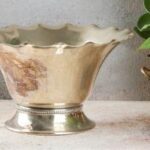 Metal
Metal
“One of the Five Elements represented by the color white or grey. Its movement is still, inward and contracting. Metal energy is very precise, logical, and has leadership qualities. It represents the West sector of the Bagua with number 7 and Northwest with number 6, spherical shapes, Autumn season, and the lungs and skin.”
Representations may include:
colors of white, grey, or light pastels
items made of metal
rocks, stones and gems
art depicting metal objects or art made of metal
oval, circles and arches
 Water
Water
“One of the Five Elements represented by the color black. Its movement is wavy and deep. Water energy portrays a depth of emotion and introspection. It represents the North sector of the Bagua, number 1, wavy or amorphous shapes, Winter season, the kidneys and sense of hearing. Classically related to the trigram Kan and the Bagua area associated with career and life journey.”
Representations may include:
colors black or navy
asymmetrical or flowing shapes
fountains or water features
glass and mirrors
crystals
art featuring water
An additional aspect to working with the five elements includes cycles or connections.
There is both a controlling cycle and a production cycle. The controlling cycle relates to how an element may mitigate or reduce the energy component of one element along the control lines; the production cycle relates to how an element may enhance or strengthen the energy of the element along the production lines. Reference the diagram below for the cycles.
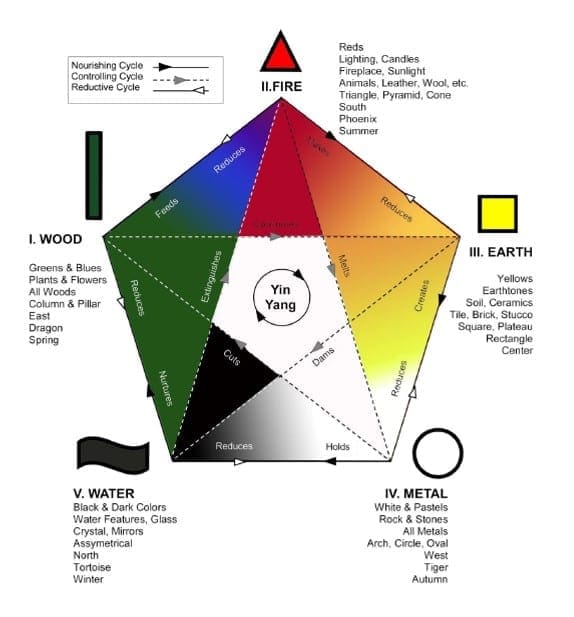
Source: Western School of Feng Shui
An example of the production cycle: water nourishes wood and wood feeds fire. Therefore, to strengthen or boost fire energy in a space, you may bring more water and wood into a space through various representations.
An example of the controlling cycle: metal chops wood so to control the wood element in a space, you might bring more metal objects to balance a strong representation of wood.
While five element balance is important in all spaces; it is important to note that the exact amount of each element in a space is not defined or the same for all spaces, all inhabitants, and even all times of one’s life. The balance is based on your personal desires, goals, and even your personal birth element. The amount of each element in each space will rarely be equal (ie. 20% exactly).
“My house is very personal – it’s full of everything I love, layered together in a mad hodgepodge of styles, eras, and colors. I love it.”

Predominantly metal, earth, and wood
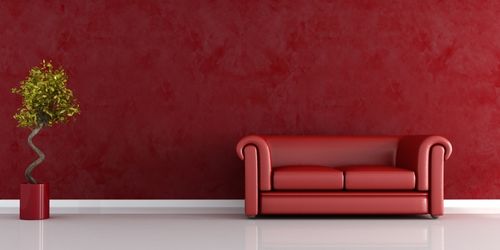
Predominantly fire
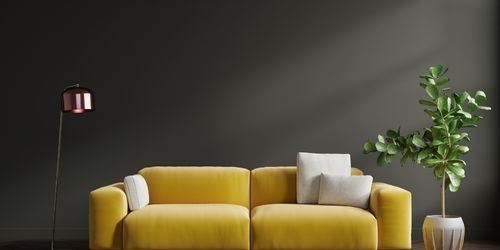
A little bit of everything ![]()
Ready to Dig Deeper?
Maybe it’s time to start your feng shui career by enrolling in a feng shui certification course. Our schools can help!

